
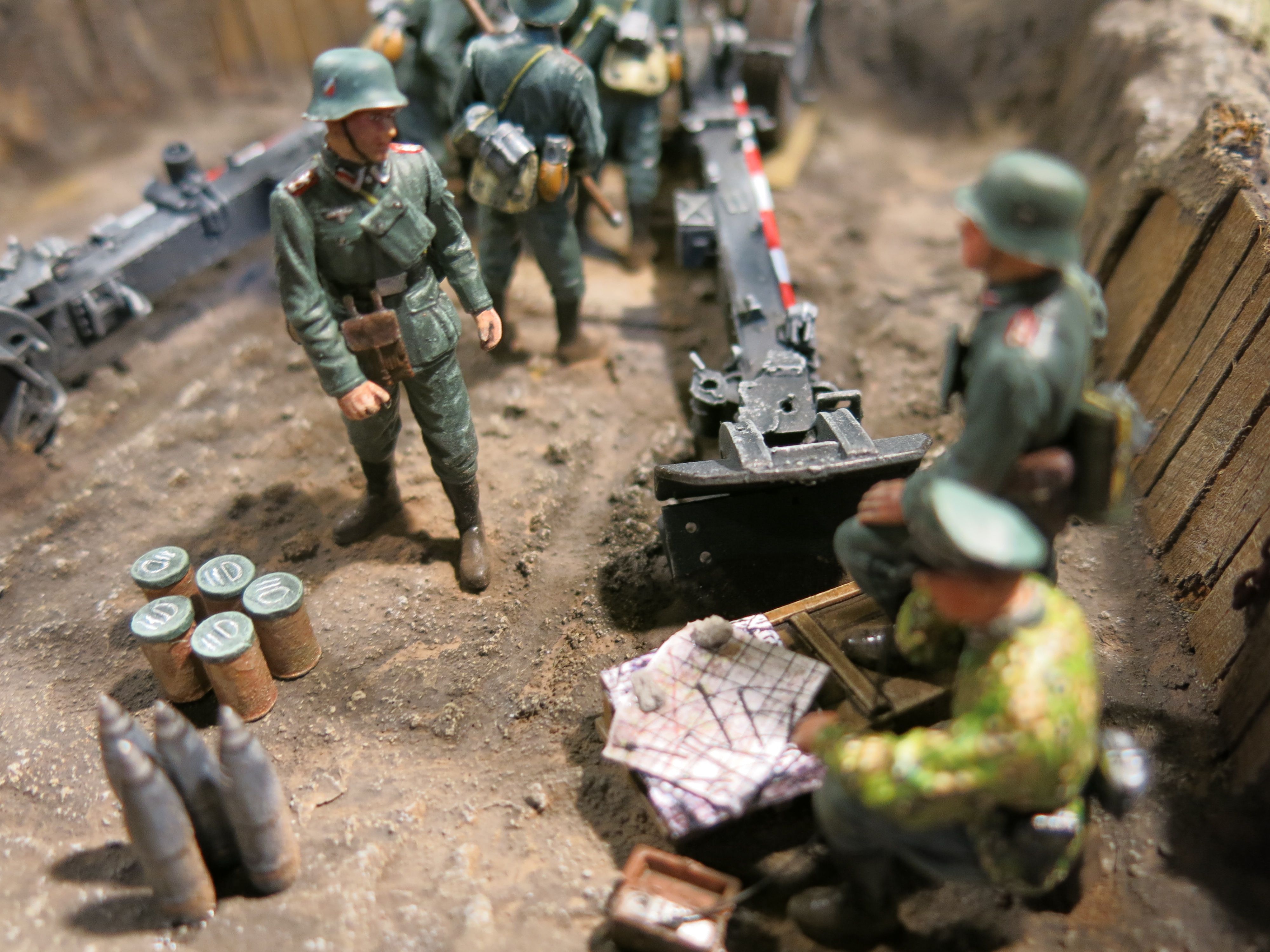
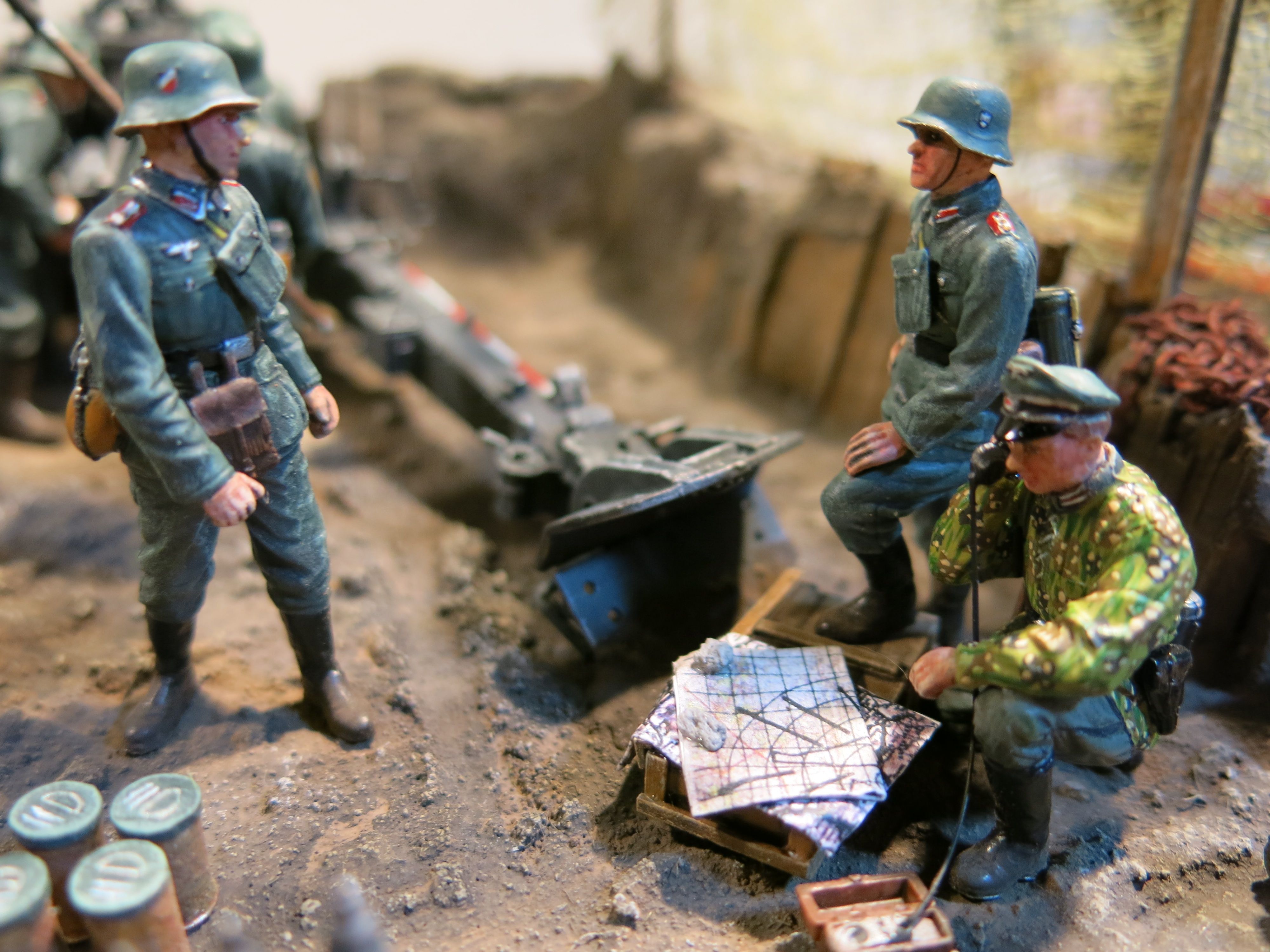

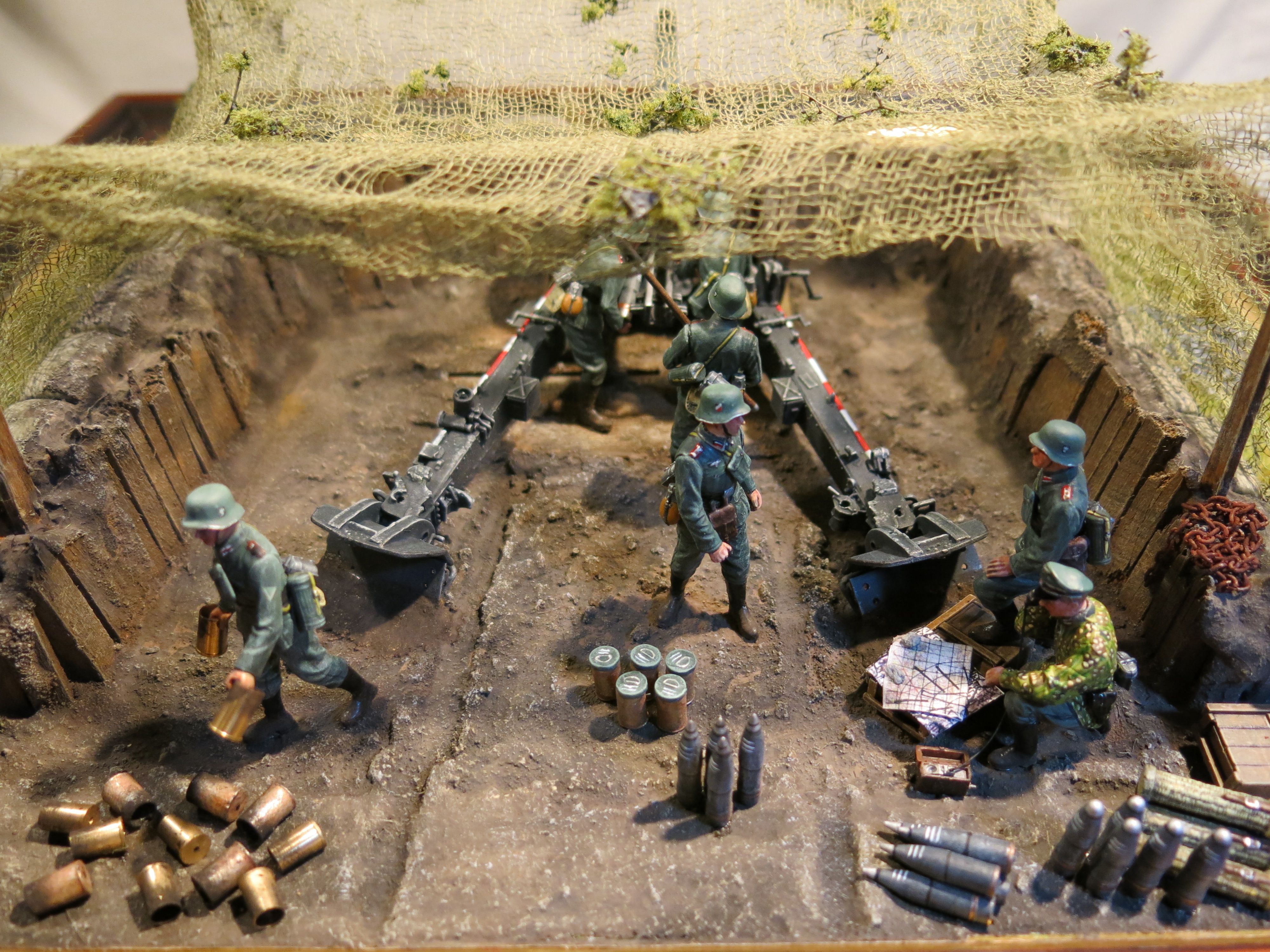
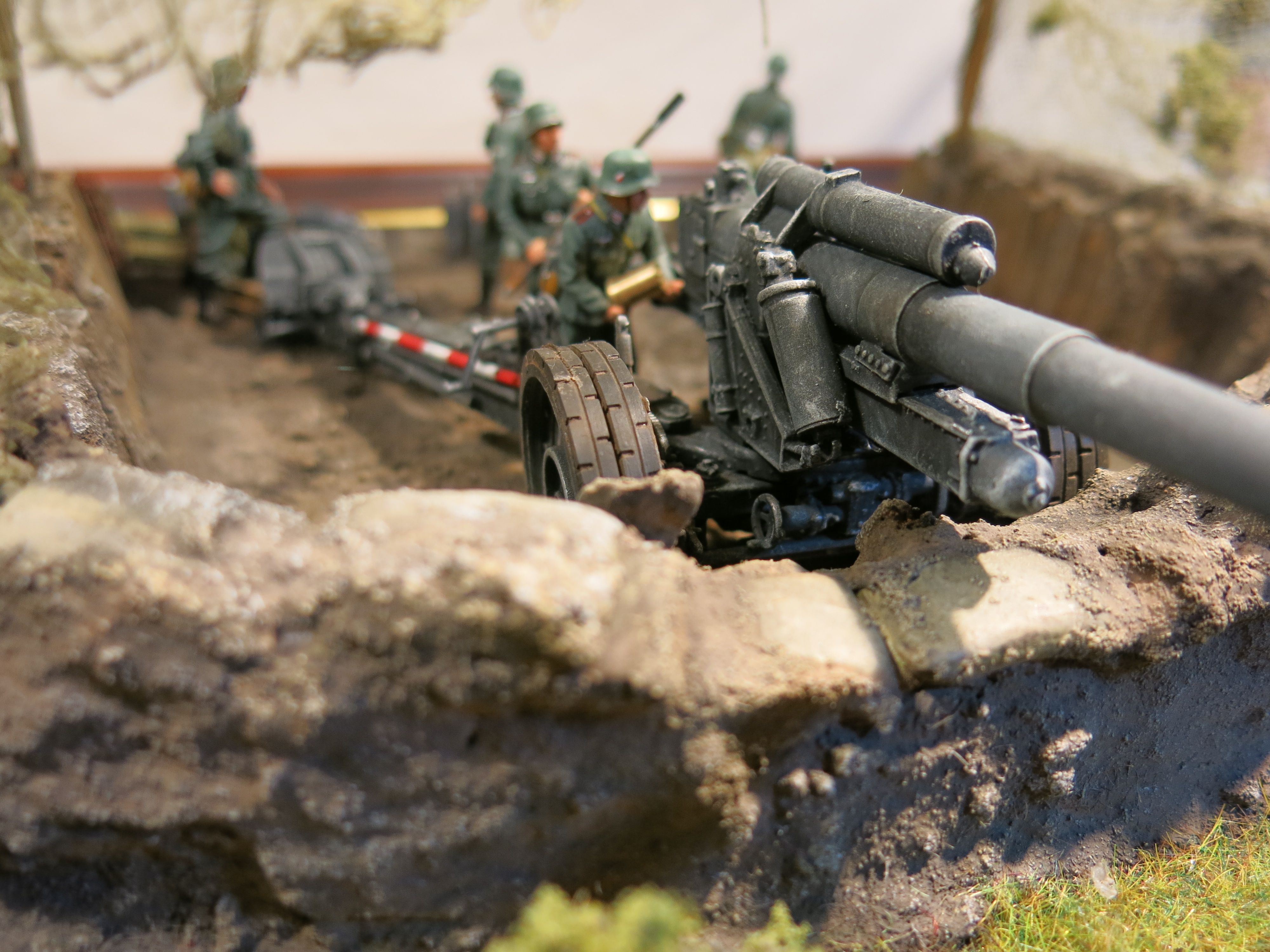
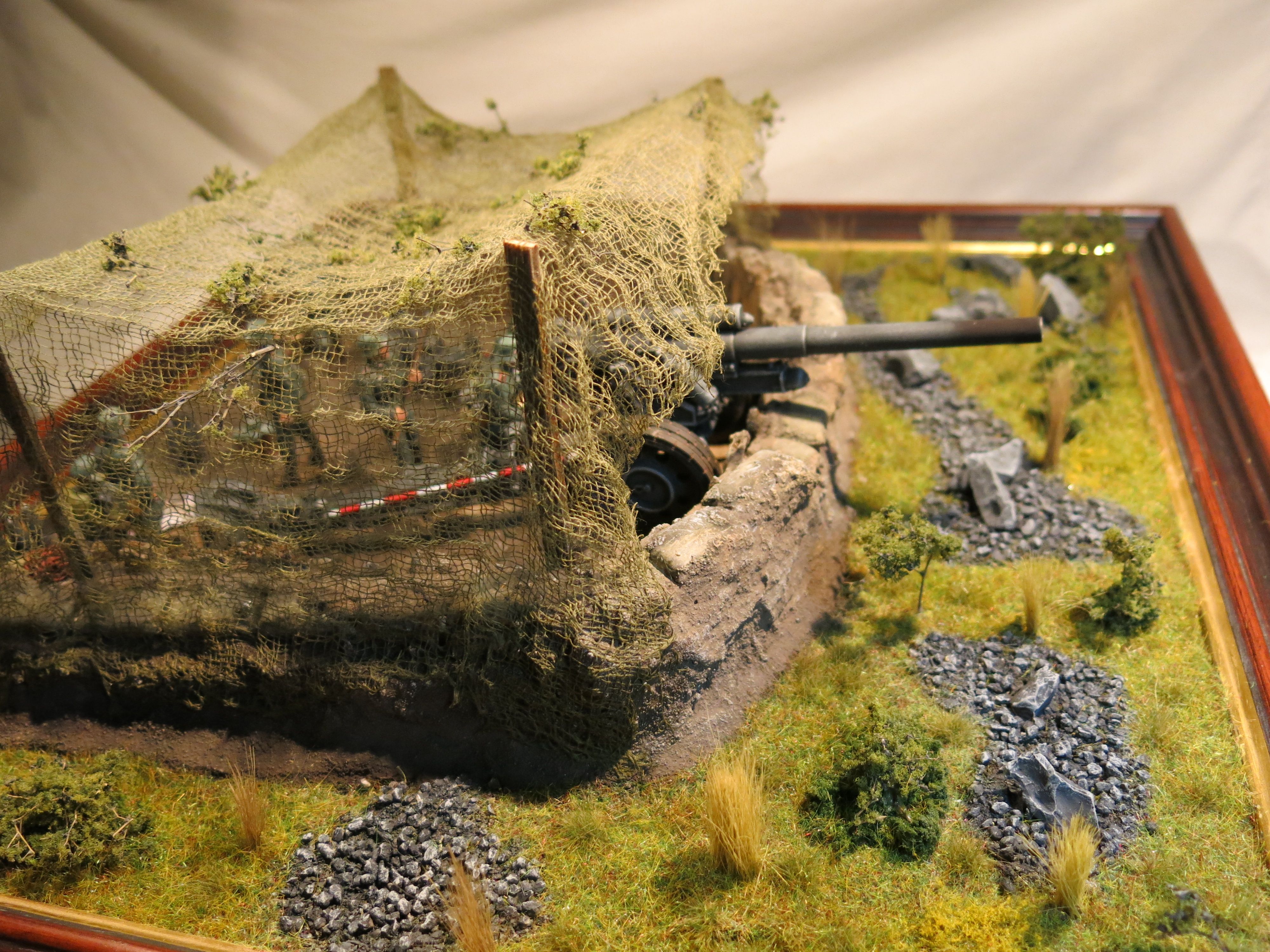
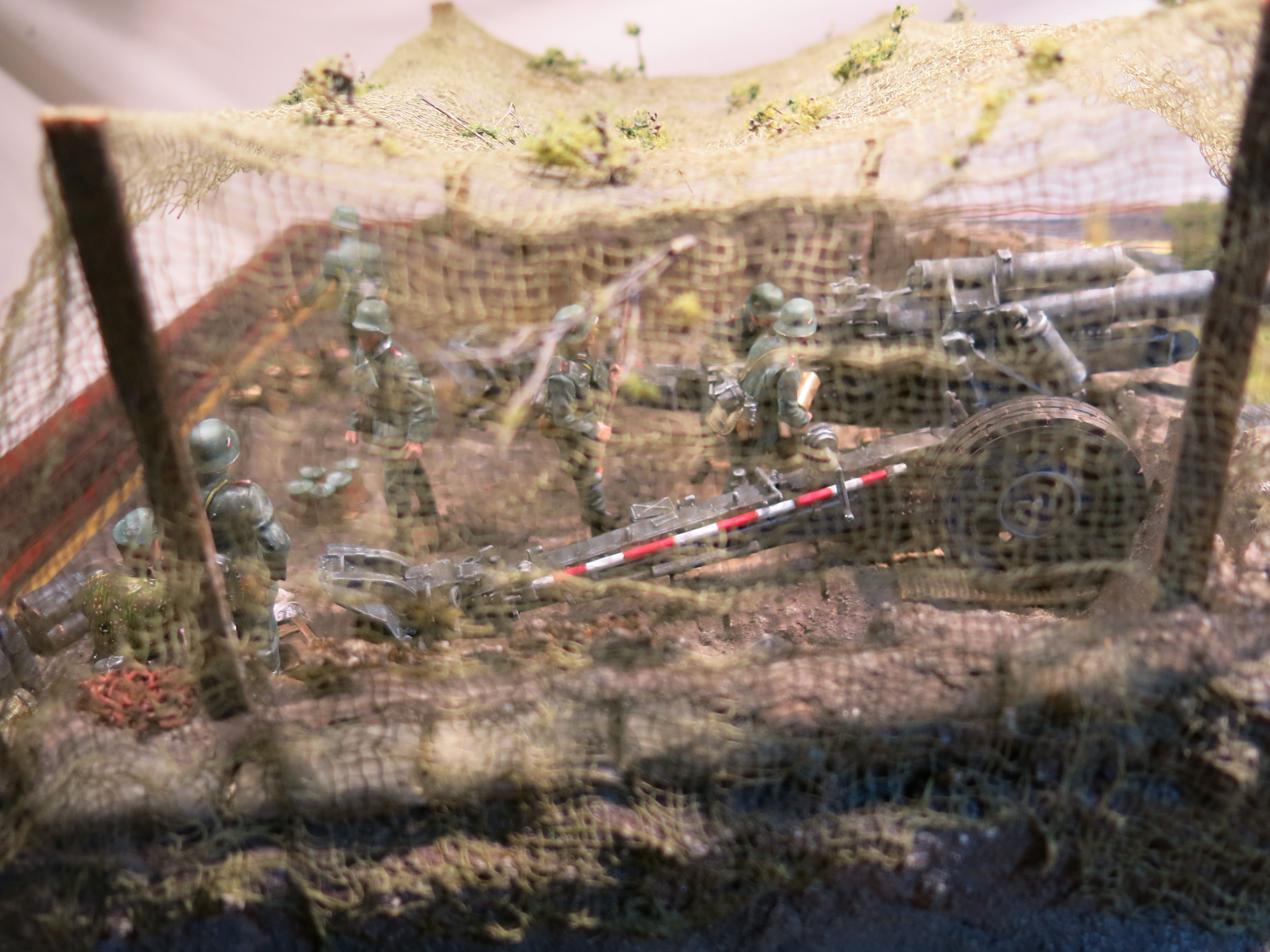


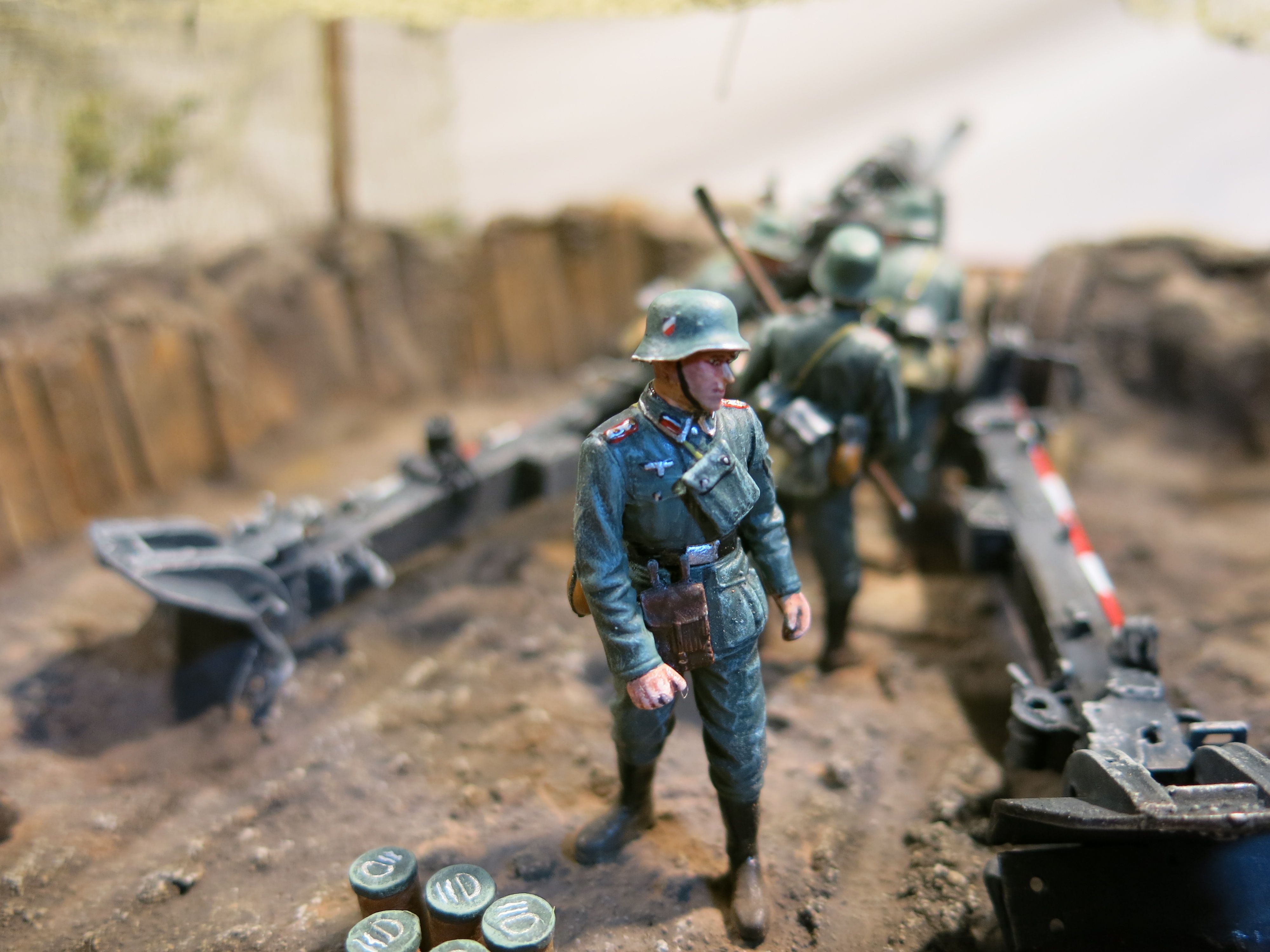
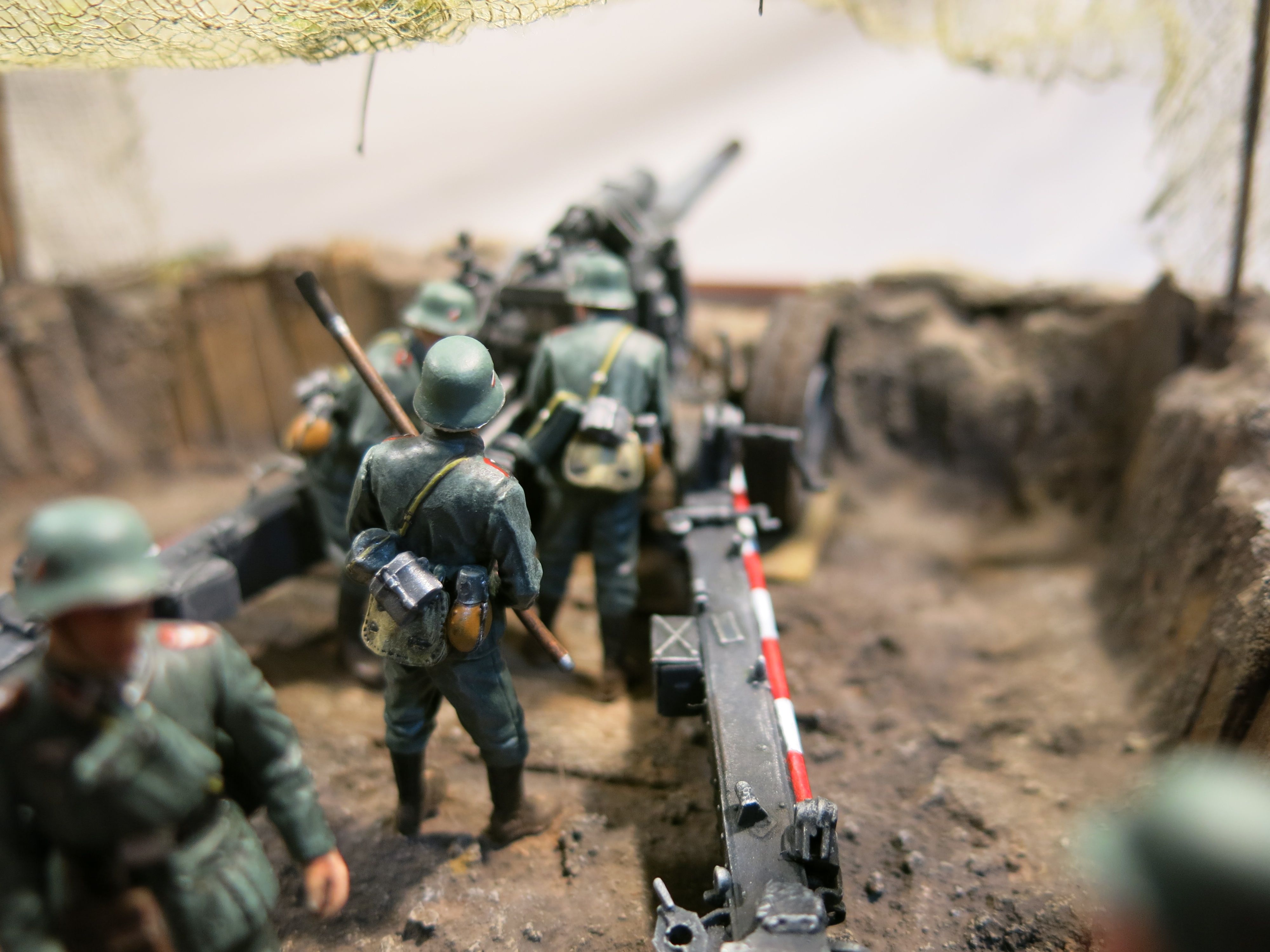

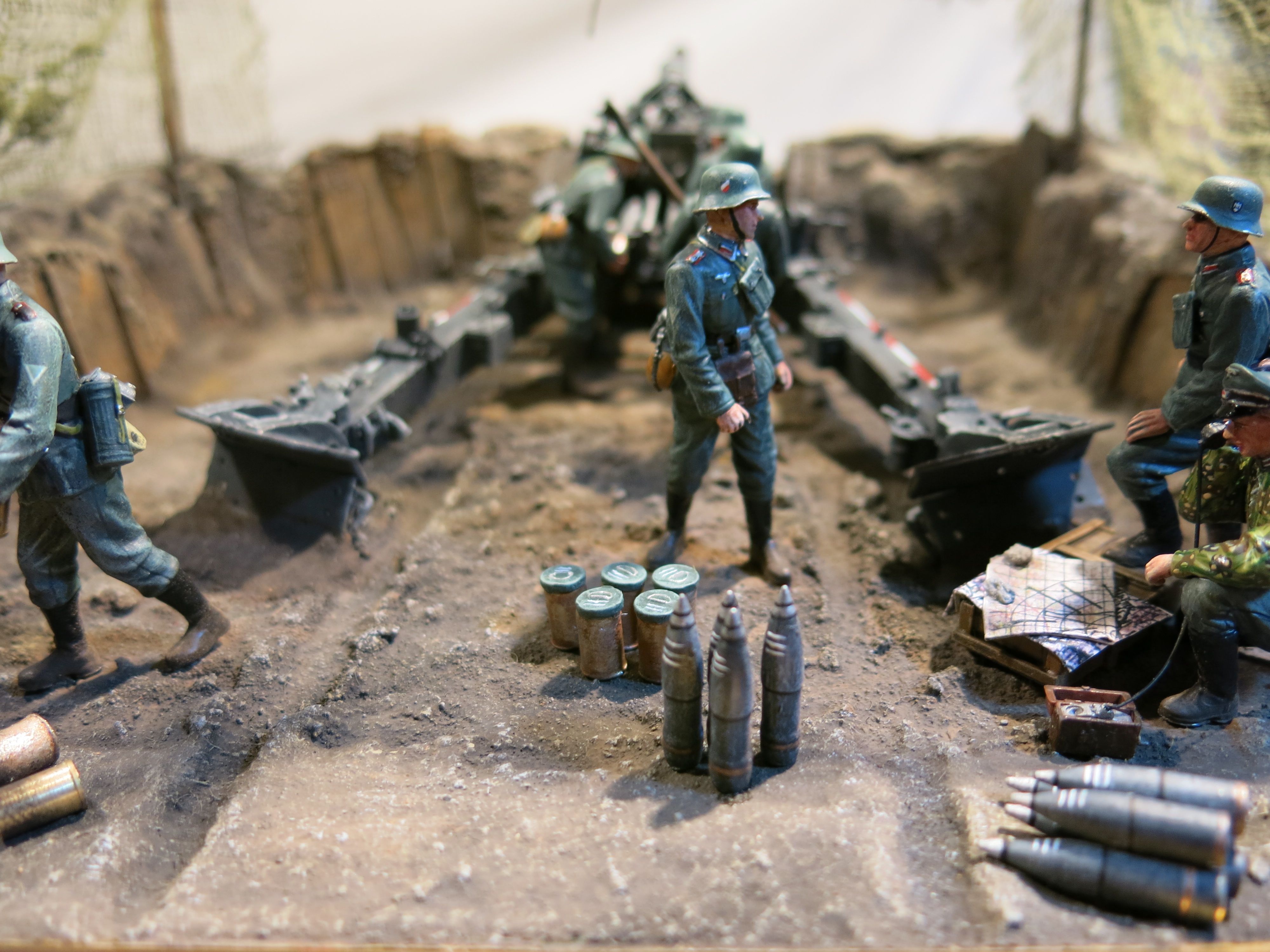
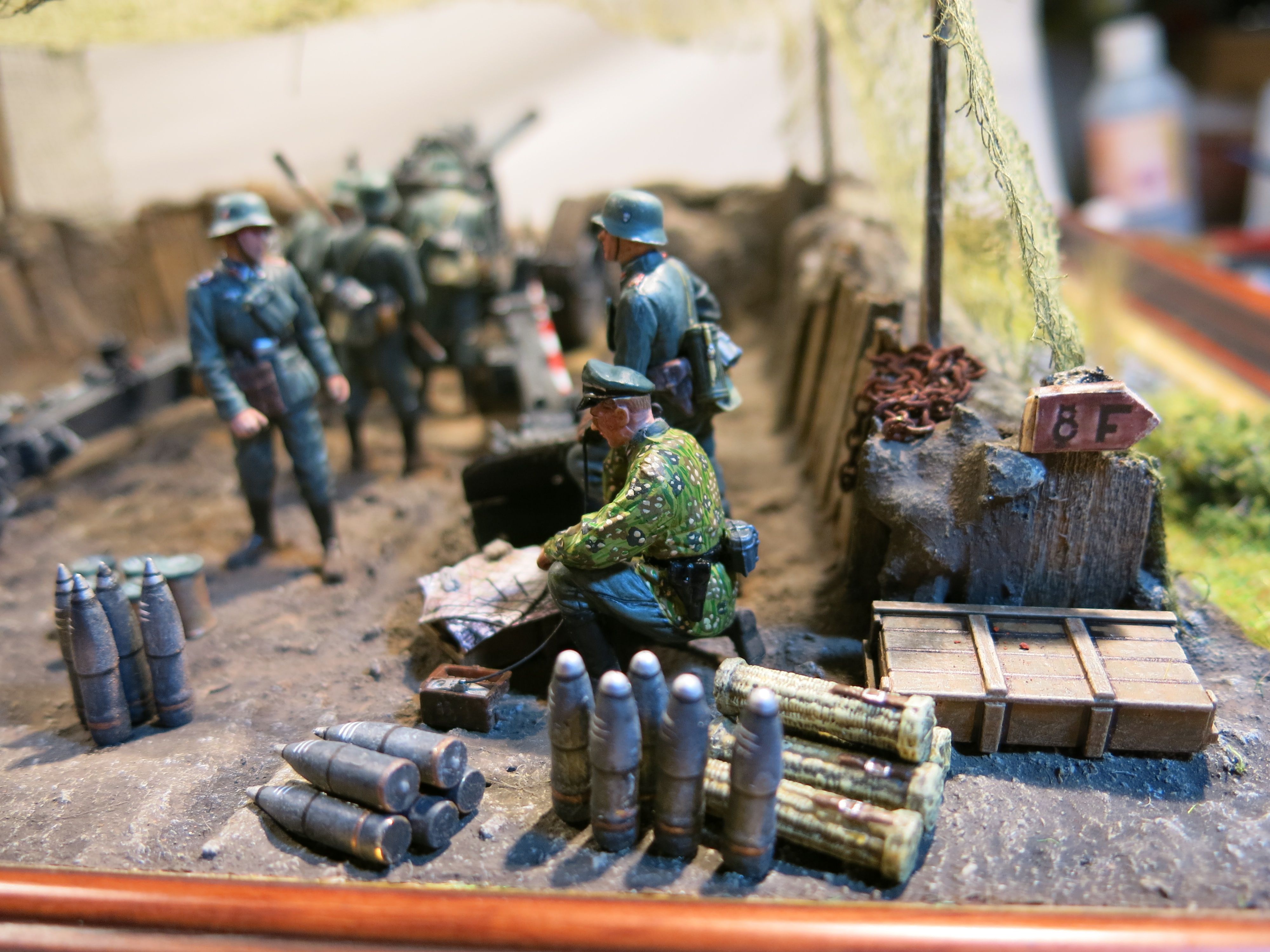

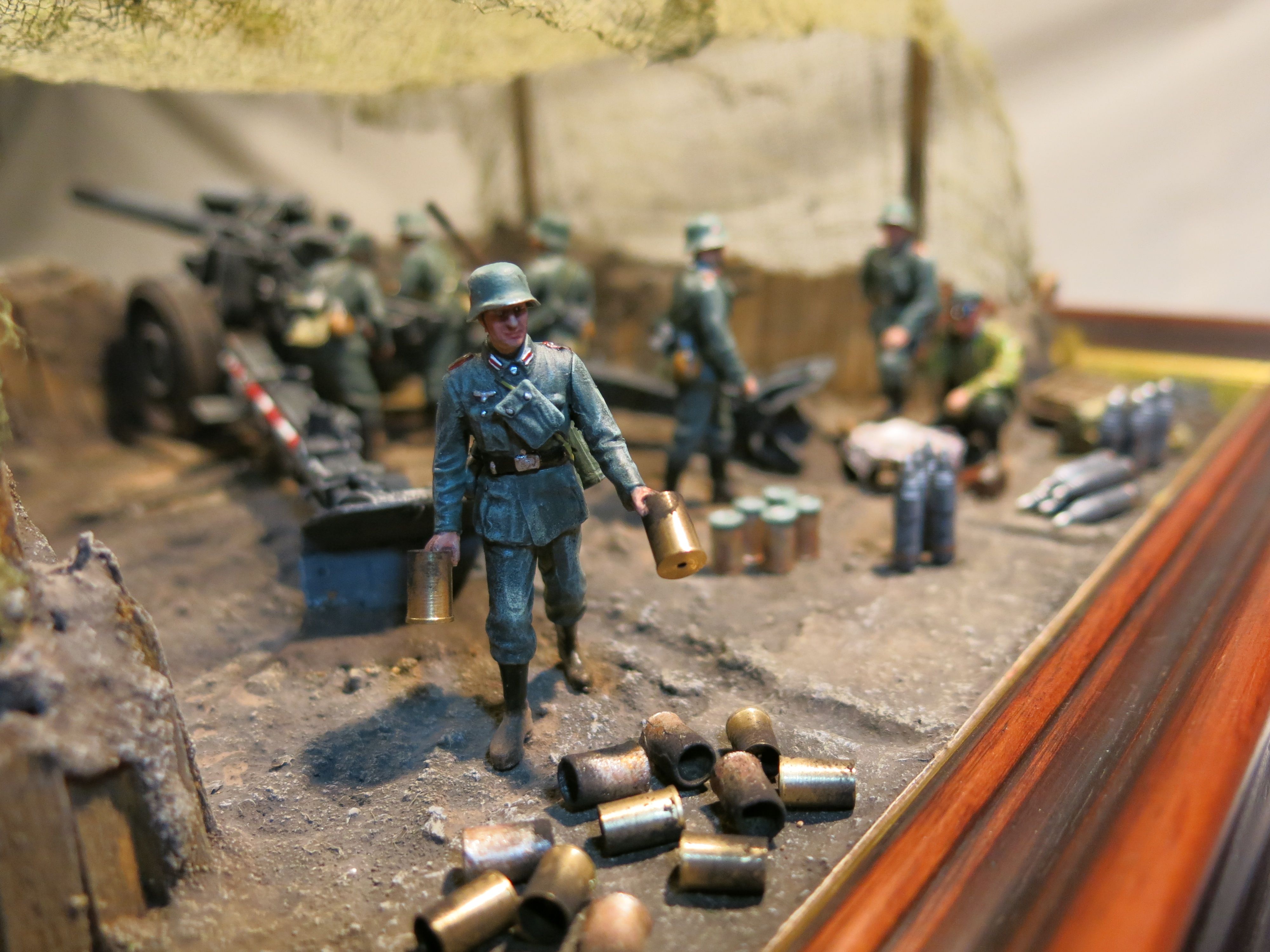
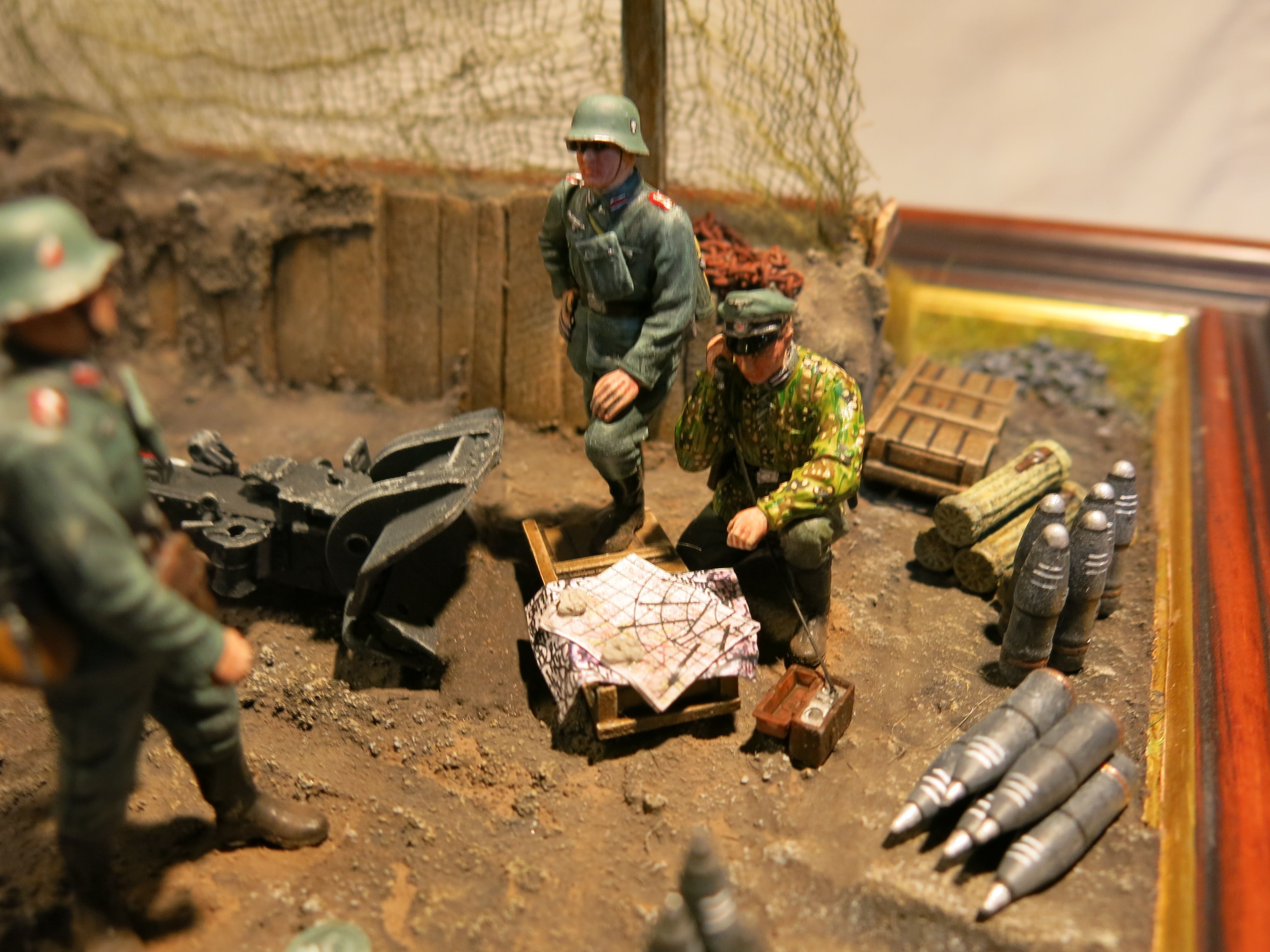


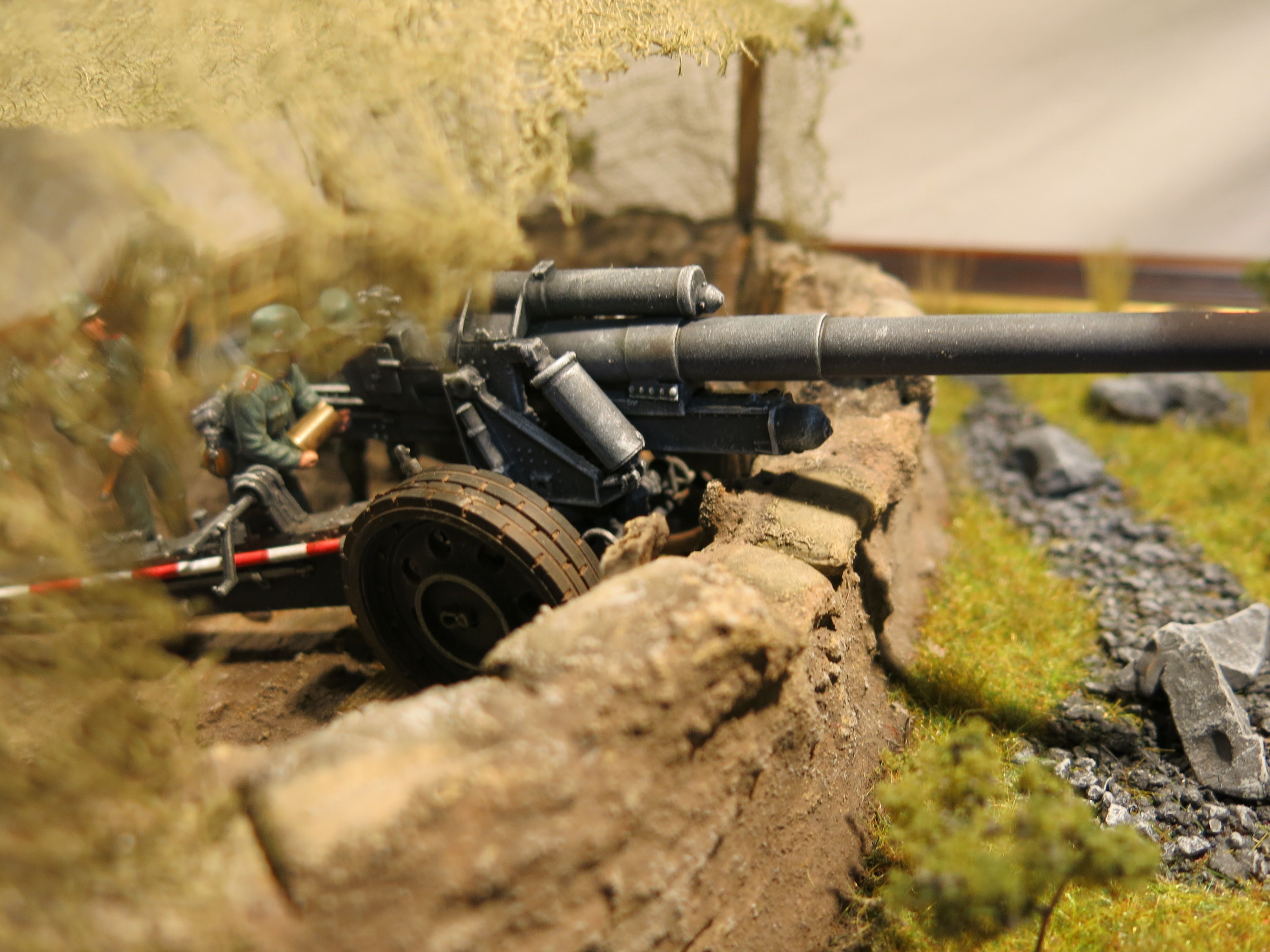
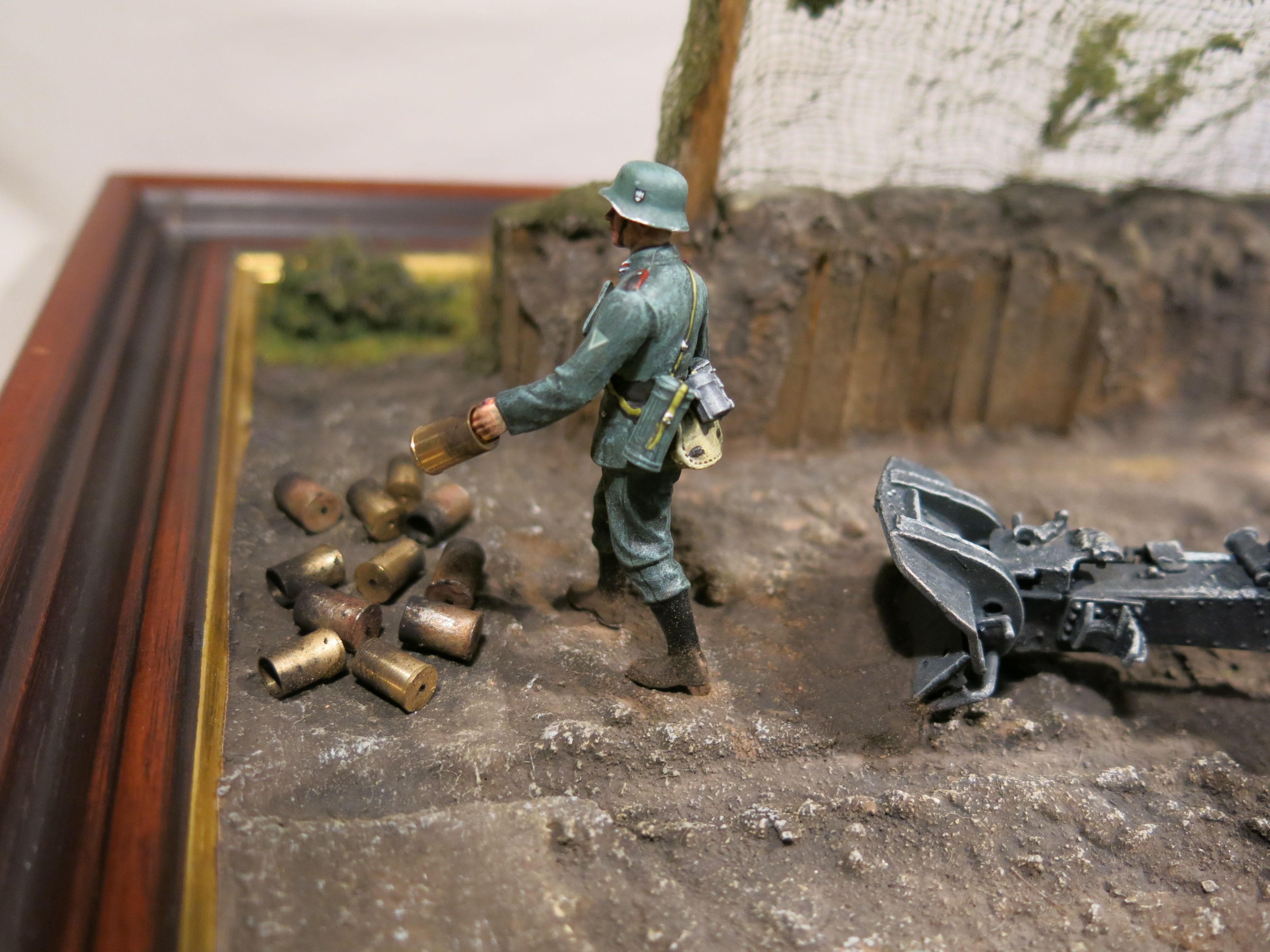

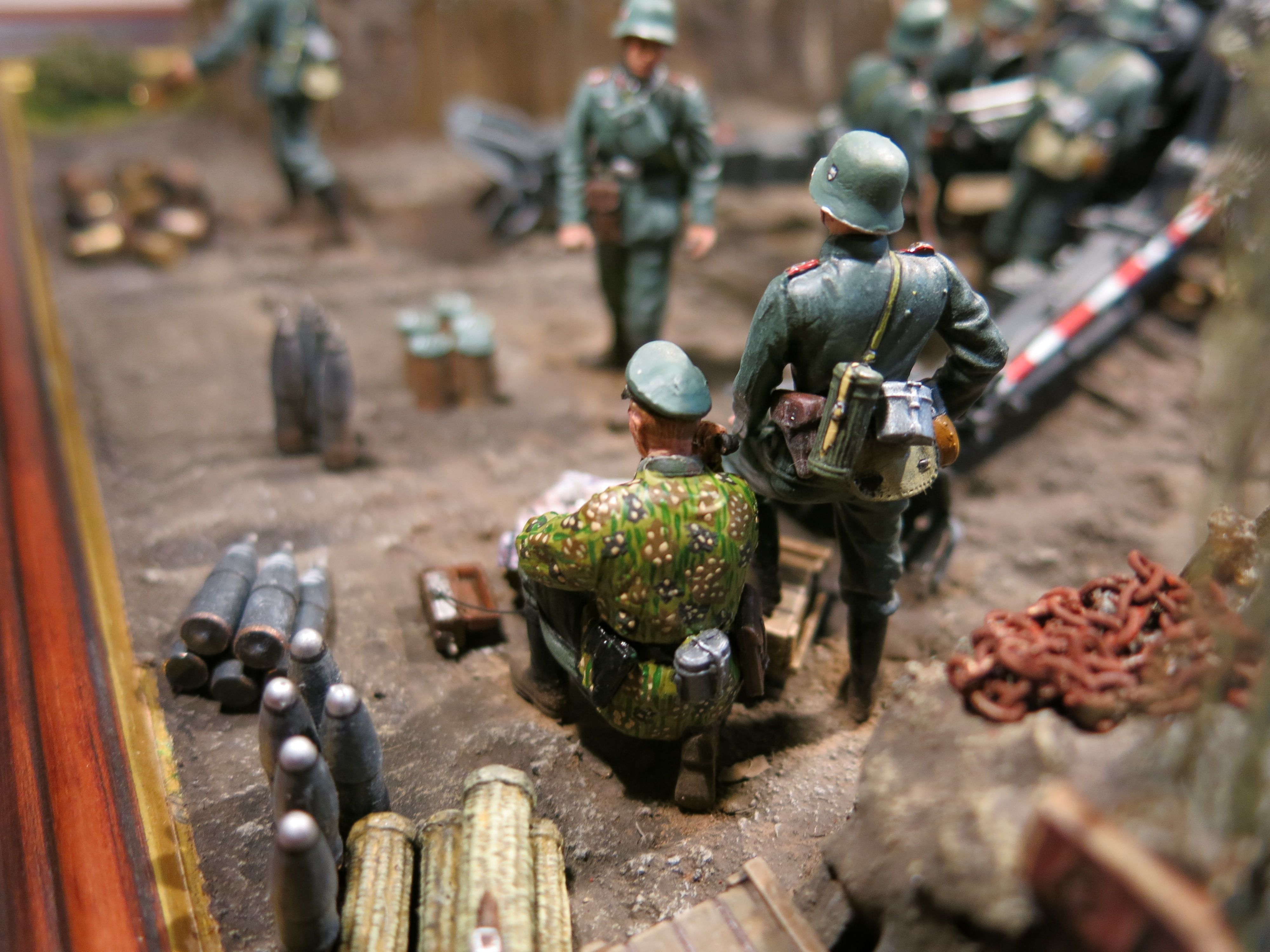
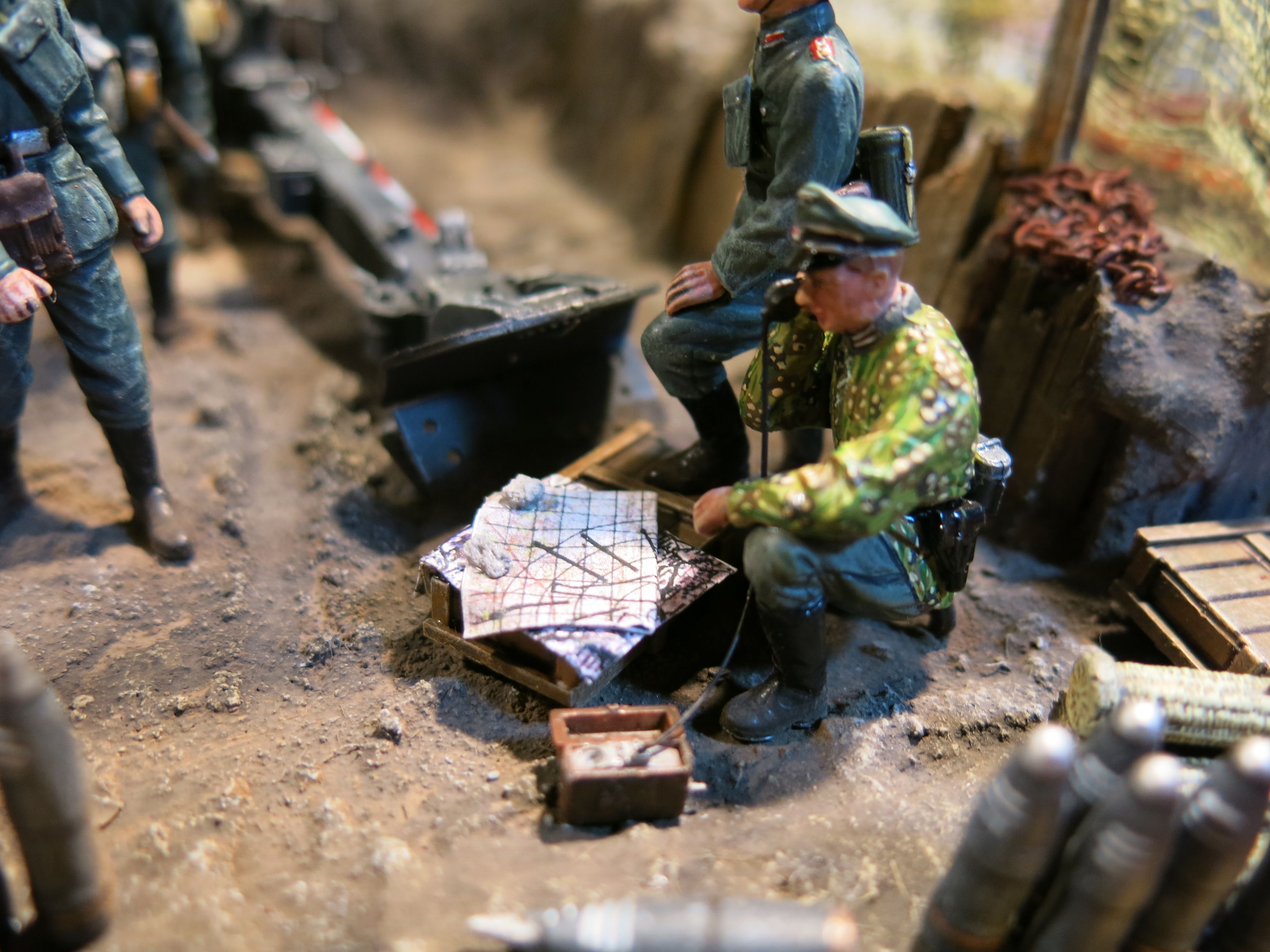


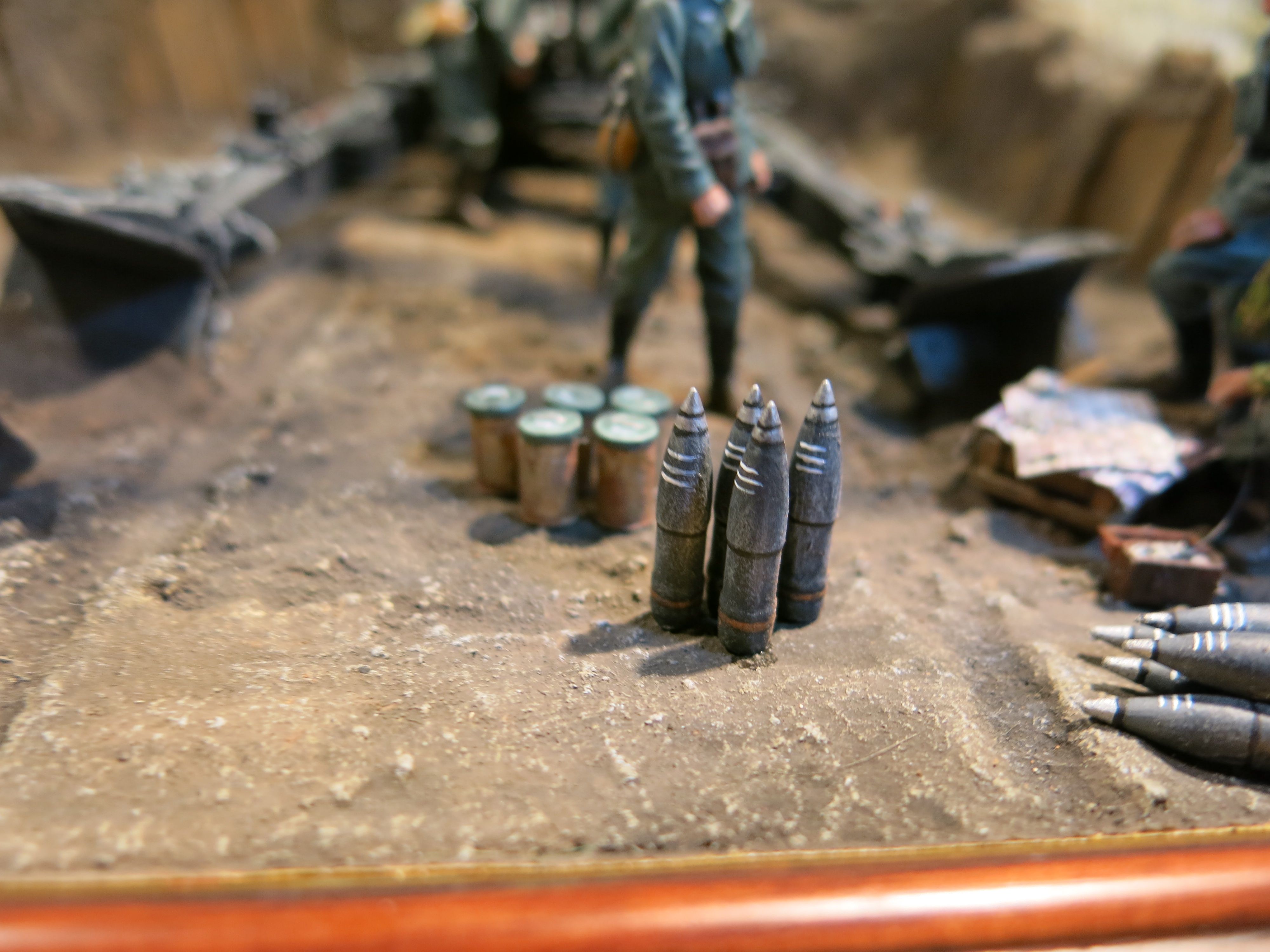

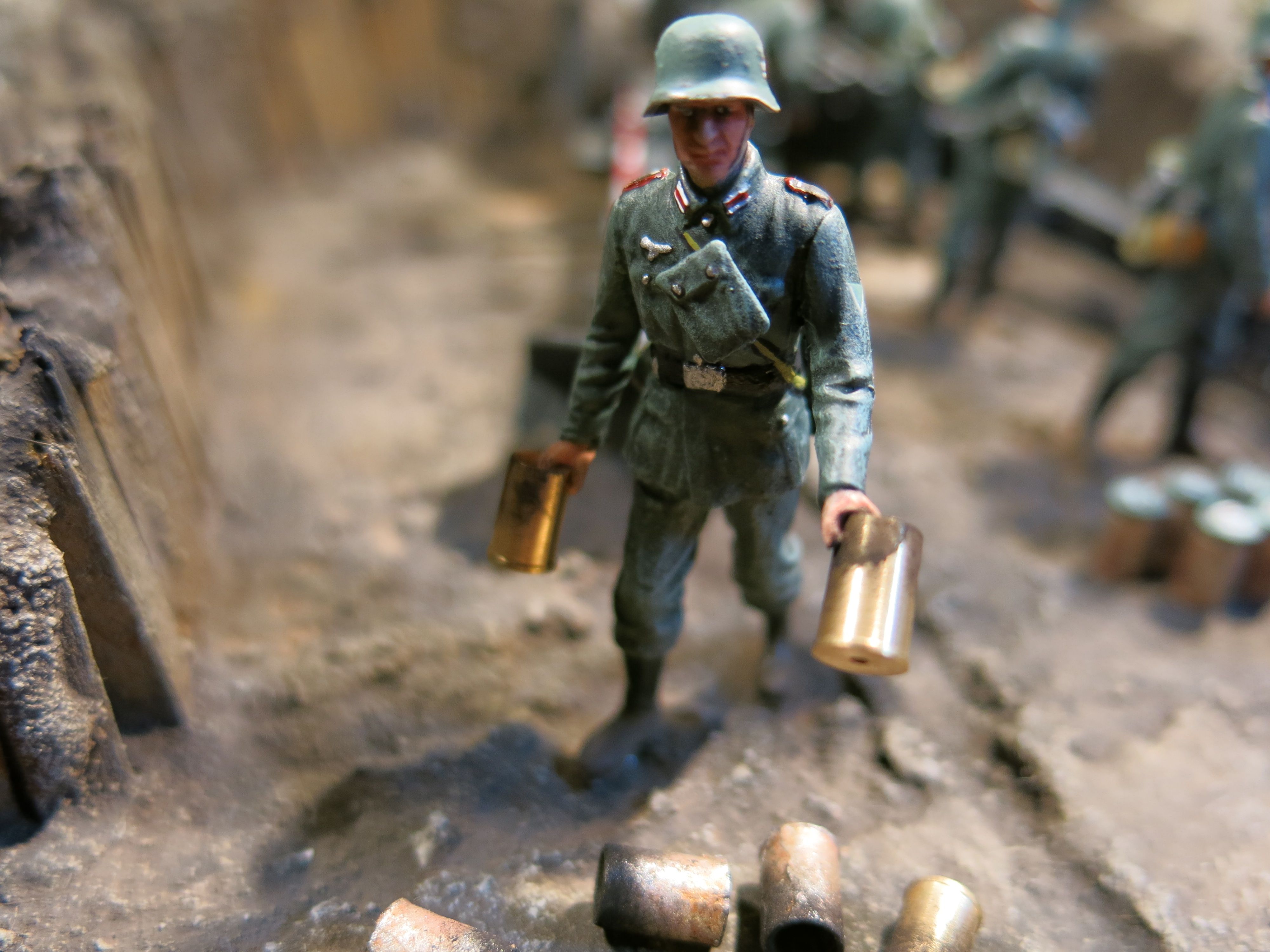




















Nice Work here.....Very Cool.
mil




Arty crews would more then likely not be wearing any field gear or webbing, even for the most part there uniforms. Any straps or anything that could get caught somewhere along the line would be removed.




Gerry,
You have really come a long way. I always look forward to seeing your latest dioramas. Your skills are improving more every time. One thing: That officer would not have his make shift desk that close to the arm of the cannon. Even with the spades dug in, those things still kick back when fired and it would knock him across the gun emplacement (if it didn't kill him). Other than that, look really good!
Jesse




Wow, I really like the look f the soldiers. Nice paintjob, I have to say. I also agree with what has been said before.
The base however looks kinda odd to me. First of all, it doesn't convey that dug-in feeling, but rather that of earth piled up to a very thin layer (that would most likely not even protect from mg fire). I don't think any gun crew would bother to reinforce a position like that since its use is very limited. Instead, you should try to hollow out the fire position from some styrofoam next time. Also, the way the camo net is put doesn't look natural. Considering the energy emerging from the firing cannon, the net should be attached to the ground, and there should be some ropes to provide tension between the beams. Right now, you just have the impression that everything is gonna fly away with the first shot.
Another detail I have to criticize is the ammo lying on the ground, in the dirt. Since the ammo comes in those neet little wooden cases, why would a crew risk inserting more dirt into the tube by storing shells on the ground? It will make their job of cleaning the tube even harder...
Finally, the camo pattern of the officer doesn't looks like any of the patterns used by the Wehrmacht. I see elements of Sumpftarn, but then the little dots would be wrong. And afaik, any dotted camo was used by the SS only...


 . However, I still fail to recognize the camo pattern...
. However, I still fail to recognize the camo pattern...







It makes more sense now with the background information. However, I still fail to recognize the camo pattern...
Here is a link to all the patterns in use by the Germans:
http://www.panzer-modell.de/tipps/figuren/eichenlaub/el-b-s.htm
It's in German, but when you click on one of the pattern names (e.g. Eichenlaub Sommer) you get a good impression about how to reproduce the patterns step by step, even if you don't speak German. Also, the colour references for Tamiya are included...
And another link with more references (in English):
http://www.kamouflage.net/country/00136.php




Hi all,
a lot of effort went into that dio! Definitely worth a big cheer!! Well done Gerry!!!
But, unfortunately a few details tend to spoil the positive appreciation a little!
the basic questions always are:
What?
When? (both historical and season defined)
Where?
and (maybe) How?
What = here is a heavy field artillery position, meaning Wehrmacht, about to support an attack way ahead.
When = is definitely in the early period from 1939-1941. The equipment tells a clear story. Season is NOT winter, uniforms are thus not meant to provide warmth.
Where = not so relevant here, as most of the battlefields are "typical" European, i.e. similar
How is not relevant at all.
Heavy artillery (since the introduction of guns in warfare) has always been and still feels like something apart or "special". Certain rules in military "behaviour" are simply ignored.
Examples would be: a soldier (on duty) without proper headgear is an absolute no-go (as we were taught quite drastically).
Soldiers in action should always carry their personal equipment (the famous gas mask container, etc), and many more!
In fact, artillery crews in action define their priorities in a different way!
Loading and firing a big gun is hard physical work. Personal protection is thought to be superfluous, given the distance to the enemy.
The "elite" status of the artillery allows the crews a certain amount of freedom (when it comes to regs).
All this makes bare-headed gun crews in shirtsleeves (or less) a lot more common. Personal gear including the carrying harness should not hamper movements and would thus be put aside.
I doubt the ammo dumped in the dirt very much, even if there might be the odd photo showing it. (One tends to believe photos easily, because they "show" the facts. In reality, many photos were/are staged for publication and do NOT show reality).
Artillery units have (or rather had, as arty is mostly mobile nowadays) special tarpaulins to store the ammo safely.
The SS camo Rock looks a little odd colourwise. While there were countless patterns, I cannot recollect having seen one with this bright green colour.
It would be foolish to say that not one single Wehrmacht officer would have worn an SS-camo Rock, but it was highly uncommon, as the Wehrmacht and SS were never close friends!!
Wehrmacht 1944-45 would be different of course, as shortages were so widespread that even liberated enemy gear was commonly used!
Sorry if I bored the hell out of people, but I felt the urge!


Cheers
Romain










Hey Gerry great diorama I really like everything about it.
The crew came out great love the paint job and I also like
the emplacement looks like a lot of work went into this piece.
Keep it up and keep them coming good stuff here.
Regards
Horst








Nice job again Gerry. I am envious of your ability to get so many dios and vignettes finished so quickly. I am really freekin slow! Can't seem to get as motivated these days as you are.
I think your scenerio makes sense for an early war piece,although Romain made some valid points. It would make sense for the crew being in a prepared position like this to be more relaxed in uniform standard but maybe that seated officer was a real,shall we say"martinet" to use a more civil term?
J








Great work Gerry, good details on the gun and nice work on the uniforms.
A couple of technical details a Gunner would pick up on though:
1.The aiming posts - those candy striped poles on the trails, they would be in use during a fire mission; placed in line about 30 metres away and used as an aiming point.
2. The stacking of the ammo was mentioned in another post. Generally, ready to use ammo is kept on a ground sheet and usually under a bomb tent.
3. The powder canisters would never be stored on their ends, that is where the primer is and end down is a major no-no. They are also a bit to close to the used cans and the rear of the gun, when the Gun Bunny removed the used can from the breach, there is often bits of still smouldering wadding, not good near large amounts of powder.
3. More detritus. More ammo boxes, tubes, shovels and general crap. We gunners are messy creatures.
Otherwise, great work.







Very nice............a lot of small details wrong with it but a lot of details right. One thing on the nay side that jumped right out at me was the guy handling the spent shells , without wearing gloves. Maybe you can paint his hands black or find some hands in your stash that have gloves............nice job








Very nice work, Gerry. You really get some awesome detail on your figures. I am envious. There's a lot of really good work in this diorama. I've learned a lot, and I am still studying it. Thank you for sharing your efforts.
Cheers,
Mike



 |